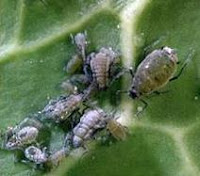.
 Luna Moth
Luna MothThe full-grown luna moth has transparent circles bordered by light yellow and blue rings on its light green wings. Luna moths reproduce twice a year and eat the leaves of trees in the deciduous forests they inhabit. Now endangered because of contaminated food sources and pesticides, the luna moth is found only in North America.
 Peacock Butterfly
Peacock ButterflyThe conspicuous eyespot markings of the peacock butterfly, Inachis io, make the insect unmistakable. The butterfly uses its patterning in self-defense, opening its wings if threatened by a bird and attempting to alarm the attacker by turning the pattern towards it. The butterfly also rubs its wings together to make a noise that helps scare off predators.
 Praying Mantis
Praying MantisThe praying mantis is so named for the prayerlike posture it assumes while waiting for its prey. Although the praying mantis generally eats insects and small tree frogs, the female will devour part of her own mate. Commonly found in tropical and warm temperate climates, the mantis was introduced into the United States to help control certain insect populations.
 True Locust
True LocustThe true locust is one of over 5000 species of grasshopper in the family Acrididae. Locusts travel in huge numbers capable of feeding on and destroying entire fields of cultivated plants and any nearby vegetation. Approaching swarms create an ominous hum and sometimes are large enough to block out sunlight.
 Tumblebug
TumblebugThe tumblebug is one of 30,000 species of scarab beetles, which include dung beetles and chafer beetles. The tumblebug forages on decaying plant material and lays its eggs in small balls of dung, which then serve as a food source for the emerging larvae.
 Walkingstick
WalkingstickWalkingsticks have the colors and shapes of the plants on which they live, resembling twigs, or dried leaves. The eggs of many species resemble seeds. Walkingsticks are vegetarians, feeding on leaves. Shown here is Extatosoma tiaratum, an Australian species resembling a spiny, leafy twig.
 Worker Honey
Worker HoneyAs they fly from flower to flower, worker honey bees collect pollen grains and pack them onto their hind legs in special hair-fringed pockets known as pollen baskets (shown here holding a glob of yellow pollen on the hind leg). Nectar, the sweet liquid produced by flowers, is sucked into the honey stomach, an internal storage sac. In the hive, field bees deposit their pollen pellets into empty storage cells of the comb and regurgitate nectar to waiting hive bees. The hive bees mix some nectar with the pollen to make bee bread, a spoilage-proof larval food, and gradually concentrate the rest of the nectar into honey by dehydration.










